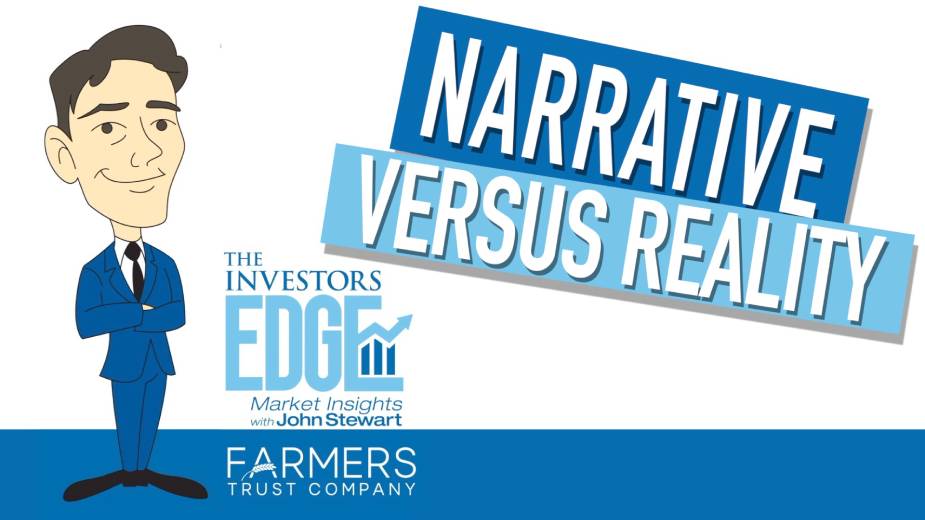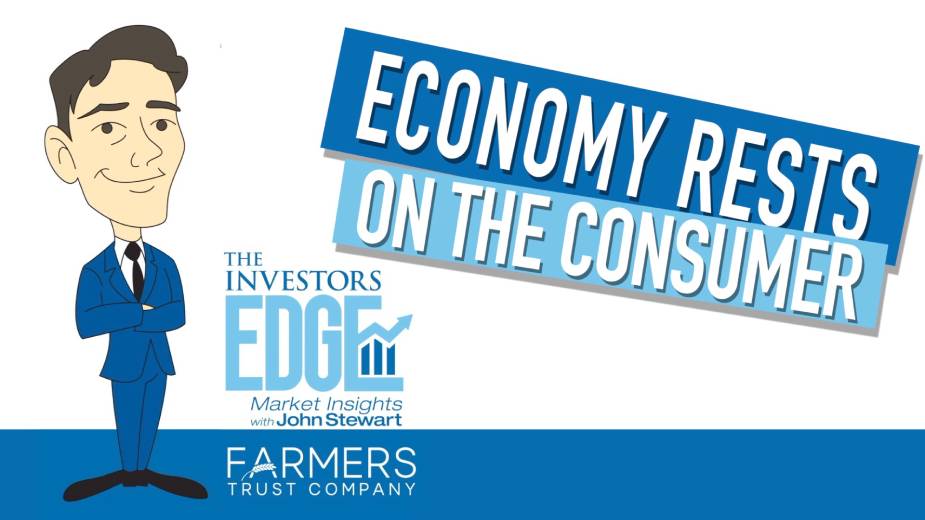Range-Bound Market to Start New Year | The Investors Edge
By John Stewart, chief investment officer at Farmers Trust Co.
Week in Review: Range-Bound Market to Start New Year
The stock market has begun 2023 the same way it ended 2022 – in a fairly narrow trading range.
Given all the doom and gloom and calls for market crashes and volatility, it may surprise many people to learn that the benchmark S&P 500 stock index is essentially flat during the past week, the past two weeks, the past three months, and the past six months.
Yes, of course, there have been some gyrations along the way, but if you look at a chart, the trading range continues to narrow.
Could this be the calm before the storm? It’s certainly possible. The first big test will be the upcoming earnings reporting season that begins next week. Fourth quarter earnings were likely pretty decent, but everyone’s attention will be on the forward looking outlook for 2023.
The good news is that expectations have already come down quite a bit, making them easier to beat. Unfortunately, there are some early signs that the economy may be weakening to the point that those expectations aren’t nearly low enough.
Until we see future earnings estimates begin to move higher (or at least stop heading lower), we’re holding off on making any tactical changes to increase risk in our portfolios.
Featured Insight: What’s Your Time Horizon
If your goal is to maximize your investment return while minimizing your risk, you need to match your portfolio and its underlying investments to your time horizon.
If you are investing for the next twelve months, it makes little sense to speculate in the stock market given that you probably have at least a 33% chance of losing money over that time frame.
If you are investing for the next twelve years, then a healthy allocation to equities is likely the only way you’ll earn a reasonable return over inflation, and your risk of losing money over that time period is exceedingly low.
The key to successfully executing any investment strategy is to measure your results on longer-term investment over sufficiently long periods of time. If you have a 15-year investment horizon, don’t panic and change your approach if you see your account value decline over one month, one quarter, or even one year. Staying the course is the hardest part of long-term investing, but no one ever said it was easy.
Looking Ahead: Earnings Season Approaches
As I alluded to earlier, the corporate earnings reporting season begins next week with the large banks kicking things off.
Aggregate earnings for all S&P 500 companies are expected to be slightly higher than the fourth quarter of 2021, but only a fraction of one percent or so. On November 1st, those earnings were expected to be 6% higher, and on October 1st, more than 9% higher. Clearly, expectations have come down substantially.
Companies will probably be able to beat the lower bar, but future guidance will be key. First quarter earnings are now expected to decline more than 6% after analysts had expected a 2.5% increase back on October 1st.
The path forward for stocks will depend on whether or not those future expectations continue to weaken, or whether the worst of the earnings cuts are behind us. I’d be careful betting on the latter until we see clearer evidence of that in the numbers.
Copyright 2024 The Business Journal, Youngstown, Ohio.


